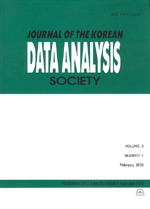Electricity Demand and Lock-in Effect
- 한국자료분석학회
- Journal of The Korean Data Analysis Society (JKDAS)
- Vol.17 No.5
-
2015.102365 - 2373 (9 pages)
- 2

This paper investigates the long-run relationship between electricity demand and real GDP (gross domestic product). In particular, this study explores the possibility of the lock-in effect by using the TAR (threshold autoregressive regression) and the regime switching regression models. When electricity demand dramatically increased between 2000 and 2010, lower relative price of electricity to the other energy sources was often considered as the main cause of an increase in electricity demand. However, electricity demand remains relatively high even after relative price of electricity has significantly risen since then. This study explains the observed asymmetric response of electricity demand using lock-in effect of real GDP. This study reports two important findings. First, this study confirms that electricity demand maintains a long-run relation with real GDP. Second, this study provides empirical evidence to support the presence of the lock-in effect of real GDP on electricity demand. The empirical result shows that electricity demand asymmetrically responses to the changes of GDP growth in the long-run. The empirical result of this study suggests that the possibility of asymmetric adjustment of variables must be taken into consideration when the future electricity demand is estimated.
1. Introduction
2. The methodology
3. The empirical results
4. Conclusion
References
(0)
(0)